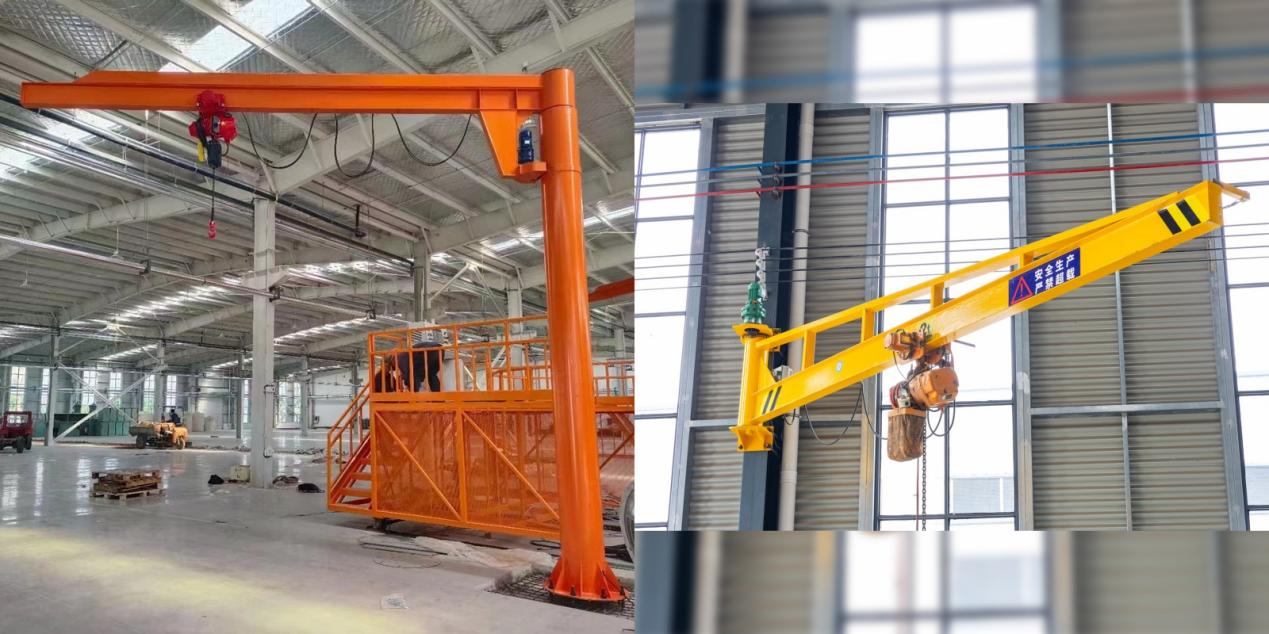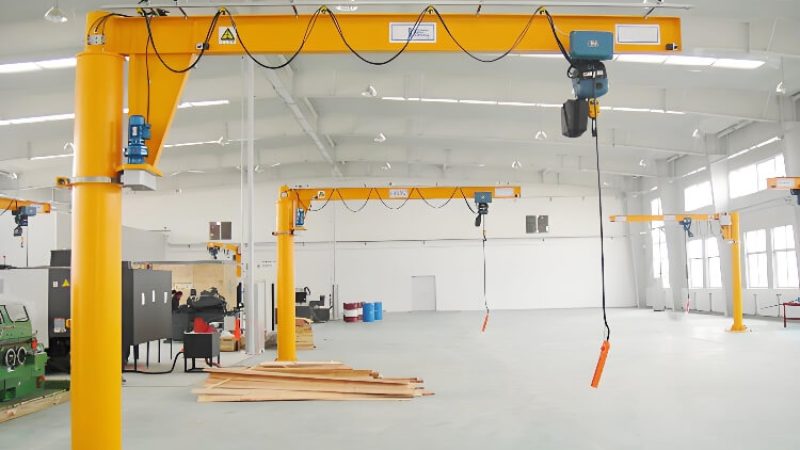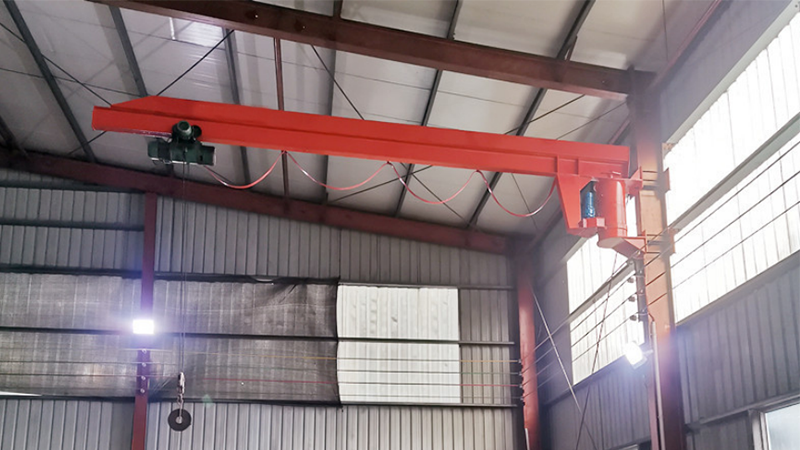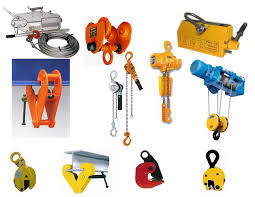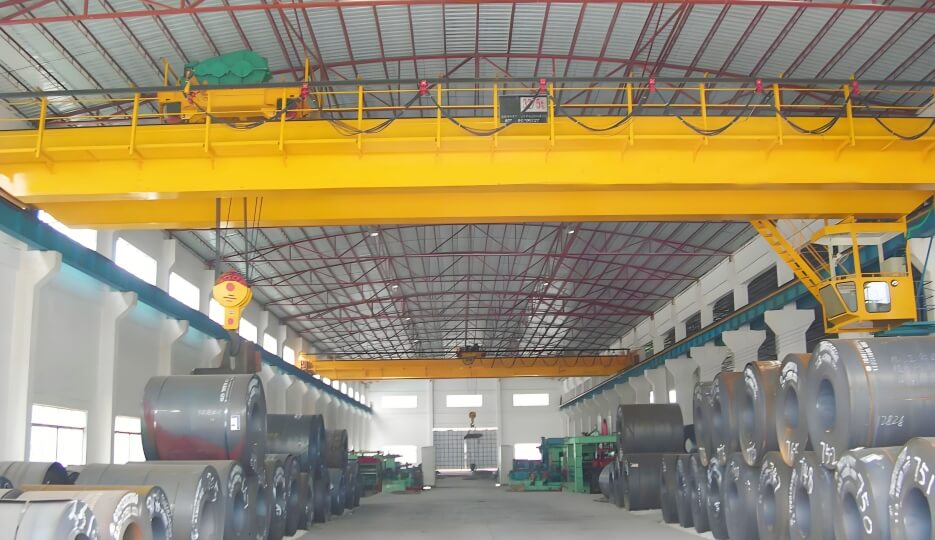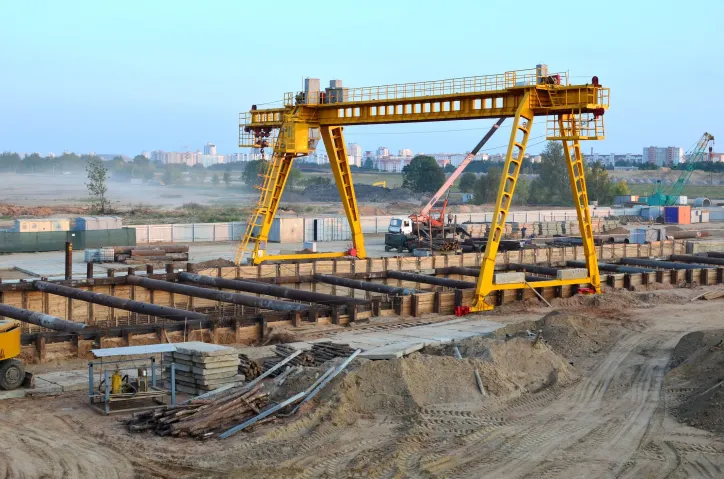Pillar Mounted Jib Crane vs Wall Mounted Jib Crane: How to Choose the Right Crane for Your Needs
Looking for the right lifting solution for your workshop?
When considering material handling equipment for your business, you might ask: “Should I choose a pillar-mounted jib crane or a wall-mounted jib crane?” Understanding the differences, advantages, and suitability of each crane type can be the key to optimizing your workflow. But how do you know which crane is the best fit for your specific needs? Let’s break it down for you. This article will guide you through the critical factors in choosing between pillar-mounted and wall-mounted jib cranes, helping you make a more informed decision.
Introduction
Jib cranes have become increasingly popular in recent years as versatile, small-to-medium lifting devices that offer flexibility, efficiency, and time-saving capabilities. They are widely used across various industries and ideal for small-scale material handling tasks. Jib cranes are primarily categorized into pillar-mounted jib cranes and wall-mounted jib cranes based on their installation methods. In this article, we will dive into the uses, features, differences, and selection criteria of both types, helping you make an informed decision.
1. Pillar Mounted Jib Crane vs Wall Mounted Jib Crane: Definitions
Pillar Mounted Jib Crane
A pillar-mounted jib crane is a small, lightweight lifting device that is fixed to an independent pillar installed on the ground. Its main structure includes the column, jib arm, rotating mechanism, hoist trolley, and electrical components. The jib arm can rotate 360°, allowing for material lifting and horizontal movement through electric or manual drive. The rated lifting capacity usually ranges from 0.25 to 5 tons.
Wall Mounted Jib Crane
A wall-mounted jib crane (also known as a wall column or wall-mounted jib crane) is a lightweight lifting device fixed to a wall, pillar, or other robust building structures. Its jib arm typically features a 180° or 270° limited rotation design, ideal for confined spaces. The lifting capacity for wall-mounted jib cranes typically ranges from 0.125 to 2 tons.
2. Pillar Mounted Jib Crane vs Wall-Mounted Jib Crane: Applications
These cranes are more suitable for open spaces such as workshops, warehouses, and assembly lines, where materials need to be moved in multiple directions. Typical application scenarios include:
Industrial Production: Lifting and transporting components.
Warehouse Logistics: Loading and unloading goods, material transfer.
Ports and Yards: Transporting materials and goods at small-scale ports.
Energy and Engineering Construction: Auxiliary operations in energy fields and lifting heavy drilling tools.
Wall-mounted jib cranes are ideal for areas where floor space is limited and rely on walls or columns for structural support. Common application scenarios include:
Handling corner scrap in mold workshops.
Stacking goods in warehouse areas adjacent to walls.
Auxiliary feeding at the side of machine tools.
3. Core Differences Between the Two Cranes
| Comparison Criteria | Pillar Mounted Jib Crane | Wall Mounted Jib Crane |
|---|---|---|
| Flexibility | 360° rotation, wide coverage, highly adjustable direction | 180°-270° rotation, fixed track operation, less flexibility |
| Space | Requires ground space for the jib arm’s radius, suitable for high-ceiling open spaces | Does not occupy floor space, ideal for low-ceiling, equipment-dense workshops |
| Structure | Independent pillar + jib arm, complex but stable structure | Jib arm fixed to the wall, simple structure, relies on wall strength |
| Cost | Higher initial cost (+30%-50%), easy maintenance | Lower equipment cost, but wall reinforcement required (+20%-30%), higher maintenance cost |
4. How to Choose the Right Jib Crane?
1.Based on Space Conditions
If your workshop has an open floor with sufficient ceiling height and requires full-range coverage, the pillar mounted jib crane is the better option, such as in large assembly lines or central material transfer points.
If your workshop has dense equipment or limited space, or if you need to utilize wall space, the wall mounted jib crane would be more practical, such as in small machine shops or areas next to walls.
2.Based on Operational Intensity
For operations requiring lifting capacity of ≥2 tons, high-frequency work, and multi-directional rotation, the pillar mounted jib crane is recommended.
For tasks with ≤2 tons capacity, smaller operational ranges, and lower frequency of use, the wall mounted jib crane is more cost-effective and practical.
3.Based on Installation Conditions
If you can perform concrete foundation work on the floor and have no load-bearing walls, the pillar mounted jib crane is the best choice.
If there are sturdy walls or columns (e.g., reinforced concrete) but limited floor space, the wall mounted jib crane should be prioritized.
4.Based on Budget
For long-term use and larger operational areas, the pillar mounted jib crane offers a better return on investment despite the higher initial cost.
For smaller operational areas, the wall mounted jib crane offers a lower upfront cost but may require additional expenses for wall reinforcement.
5. Conclusion
Both pillar-mounted and wall-mounted jib cranes offer unique advantages, and choosing between them depends on factors such as space availability, operational needs, installation conditions, and budget considerations. At SLKJCrane, we provide tailored solutions to fit your specific lifting needs. With years of experience in the lifting industry, we offer custom design, professional selection guidance, high-quality manufacturing, and comprehensive after-sales services to ensure the safe and efficient operation of your equipment.
To learn more about jib cranes and find the perfect one for your application, visit our pages:

Expert in Overhead Crane/Gantry Crane/Jib Crane/Crane Parts Solutions
Eileen Hu
With 20+ years of experience in the Crane Overseas Export Industry, helped 10,000+ customers with their pre-sales questions and concerns, if you have any related needs, please feel free to contact me!
Frequently Asked Questions (FAQ) About JIB Crane
The primary difference lies in their installation and flexibility. A pillar-mounted jib crane rotates 360° and is independent, ideal for spacious areas with high ceilings. A wall-mounted jib crane, on the other hand, rotates between 180° and 270° and is fixed to a wall or pillar, making it suitable for confined spaces where floor space is limited.
If your workshop has limited space and you want to utilize wall or pillar structures, a wall-mounted jib crane is the best option. It requires minimal floor space and is ideal for low-ceiling environments. If you need more flexibility and higher lifting capacity, consider a pillar-mounted jib crane.
Pillar-mounted jib cranes typically support weights from 0.25 to 5 tons, offering more robust lifting capacity for industrial applications. Wall-mounted jib cranes typically support lighter loads, usually ranging from 0.125 to 2 tons, suitable for lighter material handling tasks.
A pillar-mounted jib crane offers more operational flexibility with a 360° rotating arm, making it ideal for large workshops and assembly lines. It also provides higher lifting capacity, which is perfect for tasks involving heavy materials or high-frequency use.
When choosing between a pillar-mounted and wall-mounted jib crane, consider factors such as available space, operational requirements, lifting capacity, and budget. A pillar-mounted crane is better for open spaces and higher loads, while a wall-mounted crane is more economical for tight spaces and lighter loads.
Workshop Small Lifting Equipment Guide | Electric Hoists, Jib Cranes, Gantry Cranes
Complete Guide to Workshop Small Lifting Equipment: Electric Trolley, Electric Hoist, Winch, Jib Crane & Lightweight Gantry Crane
Small Portable Gantry Crane | Indoor & Mobile Lifting Solutions by SLKJCrane
Industrial Lightweight Lifting Solution: How to Choose and Use a Small Portable Gantry Crane What Is a Small
Double Girder Overhead Crane: Types, Price & Duty Class Guide
Double Girder Overhead Crane: Types, Pricing, and How to Choose the Right Duty Class Why Choosing the Right
Gantry Crane Operation Guide | Safe Use, Inspection & Training – SLKJCrane
Gantry Crane Operation Guide: Avoid Common Mistakes and Improve Safety Are You Operating Your Gantry Crane Safely? Many
Contact Us Now
Have questions about our cranes or need help?
Reach out to our friendly team for expert support and guidance.
We are here to help you power your journey towards a greener future !
Tel: +8615738677559
E-mail: info@slkjcrane.com
Whatsapp: +8615738677559
Address: Crane Industry Park, Xinxiang City Henan Provice

